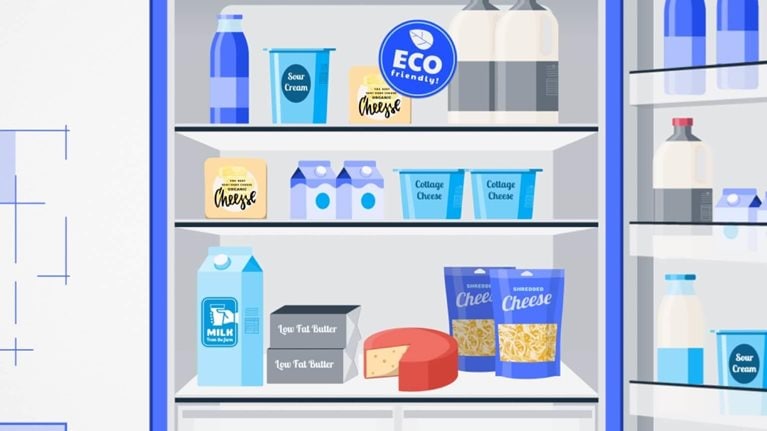Dairy plays a significant role in the American diet: 84 percent of US consumers eat and drink dairy or dairy alternatives, and only 16 percent don’t consume either product. As new plant-based dairy alternatives enter the market and prices fluctuate, these consumer groups are demonstrating shifts in their consumption of dairy and alternatives, underpinned by unique demographic factors and values.
To keep the pulse of dairy consumption in the United States, McKinsey conducted its fifth annual survey of US consumers of dairy and dairy alternatives to analyze how their habits and attitudes have changed over time. Based on responses from 1,217 consumers surveyed in August 2022, our analysis revealed five key findings:
- Most people consume dairy, very few customers consume alternatives exclusively, and about a quarter consume both.
- Consumption of dairy alternatives has risen over time, and loyalty to dairy is mixed among consumer types.
- Soaring prices have a greater impact on sales of plant-based alternatives than on sales of dairy products.
- Taste and health propel consumption of dairy and alternatives.
- A small yet important group of consumers considers environmental, social, and governance (ESG) factors in their purchasing criteria.
In this article, we dive deep into the results of our survey to explore these five key findings and the takeaways businesses can use as these trends affect the buying and consumption of dairy and dairy alternatives. By staying aware of shifting consumer interests, US dairy players can better understand the forces driving changes across the market and adjust their strategies accordingly.
Most people consume dairy, very few customers consume alternatives exclusively, and about a quarter consume both
This year’s annual dairy survey provided insight into trends among US dairy and dairy alternative consumers, as well as the demographic factors underpinning them. Overall, dairy maintains a strong foothold: our survey found that almost all customers consume dairy products, with only a very small minority consuming plant-based alternatives exclusively (Exhibit 1). The dairy-only consumer group is primarily composed of meat eaters and tends to be older. Plant-only consumers are often younger and vegan or vegetarian. And more-affluent consumers—those with a household income of $100,000 or more—tend to consume both plant-based and dairy products.

Consumption of dairy alternatives has risen over time, and loyalty to dairy is mixed among consumer types
While dairy products still maintain significant market share, plant-based alternatives have gained traction in recent years. More than one-third of consumers bought plant-based alternatives for the first time after 2020. In fact, the US market for plant-based dairy grew by 15 percent from 2019 to 2020, by 6 percent from 2020 to 2021, and by 11 percent from 2021 to 2022.1 There is evidence of the continued shift toward plant-based alternatives: approximately 45 percent of people who consume plant-based products plan to increase such consumption in the next three years.
Although plant-based consumption is on the rise, there are ebbs and flows within its subcategories. For instance, in plant-based beverages, soy milk has lost market share to other alternatives such as almond milk and oat milk.2 And in contrast to overall growth in the plant-based market, there have been recent pockets of decline as consumers appear to leave categories—such as in the second quarter of 2022, which saw a decline in plant-based creamers, yogurt, cheese, and ice cream.3
What does this mean for dairy? Overall, loyalty appears mixed: out of consumers who have tried plant-based alternatives, 49 percent have stopped consuming dairy or consume less than they used to, whereas only about 45 percent plan to continue their usual dairy consumption (Exhibit 2). Even so, our survey found that the majority of consumers in the United States only consume dairy, not alternatives, indicating dairy’s strong market hold across the consumer landscape. As of 2022, US retail volume market share for plant-based beverage alternatives was relatively small at 12 percent, and the share for cheese and yogurt alternatives was only 2 percent.4 Furthermore, over the next three years, approximately 90 percent of people have no plans to reduce their dairy product consumption.

Soaring prices have a greater impact on sales of plant-based alternatives than on sales of dairy products
Consumers note inflated prices across both dairy products and plant-based alternatives, but more consumers noted higher prices in dairy. For example, 82 percent of consumers noticed higher prices for dairy milk, whereas only 65 percent noticed higher prices for oat milk and 62 percent for other plant-based beverages. However, consumer perception may not correspond exactly with real price increases because many variables can influence perception. For instance, the average dairy-only consumer has lower household income and may be more aware of price fluctuations. Dairy consumers also ranked price above all other factors as the most important consideration in deciding their last dairy purchase—a pattern that was not evident for consumers of plant-based alternatives.
Even though consumers are more motivated by price when buying dairy products and notice inflation in dairy more than in alternatives, their commitment to dairy products in the face of inflation appears stronger. When asked about their behavior in the past month after noticing price increases, 56 percent of consumers reported that they have continued buying the same amount of dairy milk and are not switching products, brands, or product sizes. On the other hand, only 38 percent of soy milk consumers and 32 percent of consumers of other plant-based beverages said the same. Drivers of this loyalty may vary, but, regardless, consumers of dairy products seem less likely to alter their dairy purchases even in an inflationary environment. These results are consistent with the relatively inelastic nature of dairy products.5
Taste and health propel consumption of dairy and alternatives
Consumption of dairy and plant-based alternatives is driven by taste preferences and perceived health benefits. For dairy consumers, taste was far and away the most important reason given for consuming milk (70 percent), followed by health reasons (29 percent) (Exhibit 3). Plant-based dairy consumers are also driven by taste and health, but they are mostly motivated by health reasons (42 percent), closely followed by product taste (36 percent).

These differing motivations for consumption can be linked to demographic factors. Consumers who incorporate alternatives into their diet (exclusively or in addition to traditional dairy) often self-identify as being committed to personal-health topics. According to our survey, 75 percent of plant-based consumers believe it is very important to eat healthy, and 63 percent claim to try to lead very healthy lifestyles, compared with 46 percent and 35 percent of dairy-only consumers, respectively. McKinsey research on the future of food corroborates these results,6 likewise finding that the main reason why consumers of plant-based alternatives select the products is their personal health, followed by their taste preferences.
A small yet important group of consumers considers ESG in their purchasing criteria
As ESG values gain sway across the United States, they are influencing consumer behavior; however, concern for ESG characteristics is not evenly distributed across consumers. Those who exclusively consume plant-based products are four times more likely to report prioritizing ESG characteristics in purchasing decisions than dairy-only consumers. Younger consumers also appear to care more. Fifty-three percent of millennials consider reducing their impact on the environment to be an important or extremely important goal in making choices about what to eat, compared with 44 percent of baby boomers. Younger consumers also tend to make their beliefs known on social media, allowing their opinions to be heard and to influence others.
Accordingly, leaders in the dairy sector are receptive to consumer pressures and are making commitments to invest in sustainability. Forty-seven percent of processors with a sustainability or ESG strategy report consumer demands as a top motivation for their company to pursue its strategy, with two-thirds of companies investing corresponding funds for implementation. These motivations outweigh both investor demands and regulatory pressure.7 Consumers, then, appear well positioned to help improve sustainability in the US dairy industry.
Just as concern for ESG attributes varies across consumers, willingness to pay for them also varies. While 13 percent of all consumers are willing to pay for ESG attributes, one-fourth of plant-based dairy consumers (exclusively or in combination with dairy products) are willing to pay at least 10 percent more for products that emit fewer greenhouse gases and do not harm animals (Exhibit 4). These findings are promising for the planet and likely foreshadow the important role sustainability will play in consumer decisions moving forward.

Next steps for market players
As the US dairy market moves forward, companies have several trends to keep in mind. For example, while plant-based alternatives to dairy have gained momentum since 2019 and are expected to continue growing in share, dairy itself has also enjoyed positive momentum. In addition, the data suggests that one-third of all consumers in 2022 care about environmental sustainability, a trend that processors are noticing and an indication that the US dairy industry should consider prioritizing its environmental impact in the years to come.
As they think about consumers in 2023, dairy and plant-based-alternative companies can consider several actions and key areas to focus on when making strategic decisions:
- Focus on precise revenue management tactics when responding to inflation. While not all consumers are changing their behaviors yet, more than 80 percent of consumers are feeling the impact of pricing. This creates an opportunity for consumer-facing dairy brands to focus more on a range of levers, including product size, product assortment, and use of promotions, to help ease the visible impact of pricing.
- Explore new flavors and tastes to increase consumer interest. Taste is still driving purchases of dairy products and alternatives. With a range of use cases for dairy, taste innovation is increasing in importance for consumers. Brands have an opportunity to creatively use ingredients and flavors to cater to the shifting palates of consumers, including by creating products for different times of day and for different occasions.
- Highlight dairy and alternatives’ nutrition stories. Both consumers of dairy and consumers of plant-based alternatives care about their health and value the health benefits of dairy and alternatives. Communicating health details such as calcium, protein, vitamin D, sugar, and fat content by leveraging all media channels is increasingly important.
- Recognize younger consumers are making decisions based on ESG characteristics. Overall, ESG is increasing in importance for dairy and plant-based alternatives. With 22 percent of consumers under 40 years old caring about ESG and up to 25 percent of all dairy and dairy alternative consumers willing to pay more, it is important for companies to look for ways to focus on ESG impact and to communicate it effectively to consumers.
As markets and the economy shift, consumption of dairy and alternatives will shift in tandem. By being mindful of trends, companies in the US dairy and alternatives market can more successfully navigate decision making and take steps to ensure that consumer needs for taste, pricing, nutrition, and sustainability are being met or exceeded.


